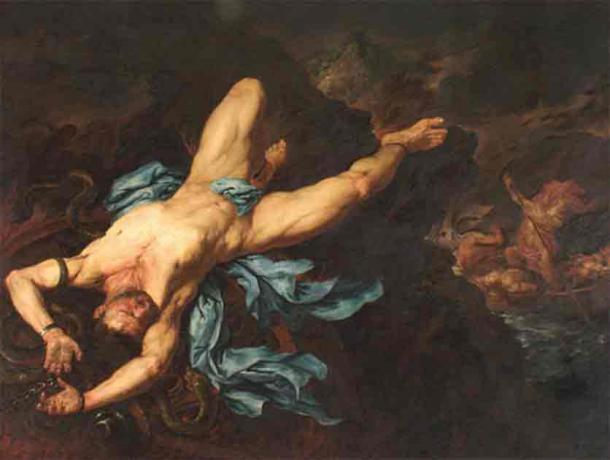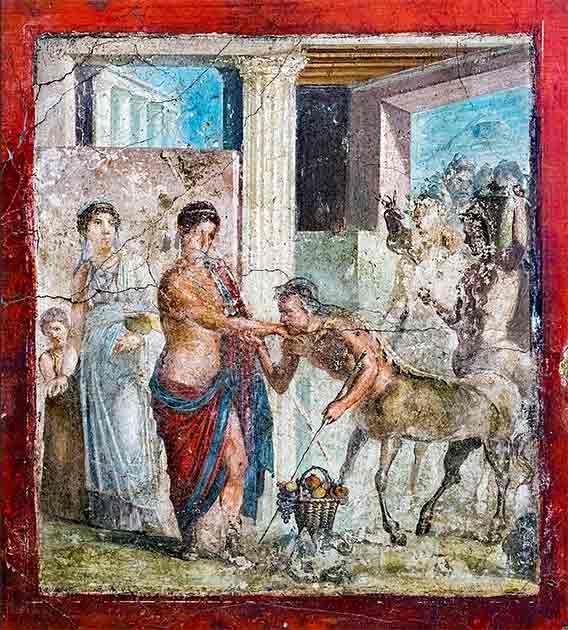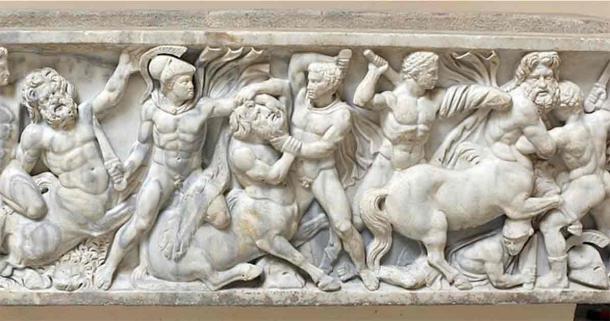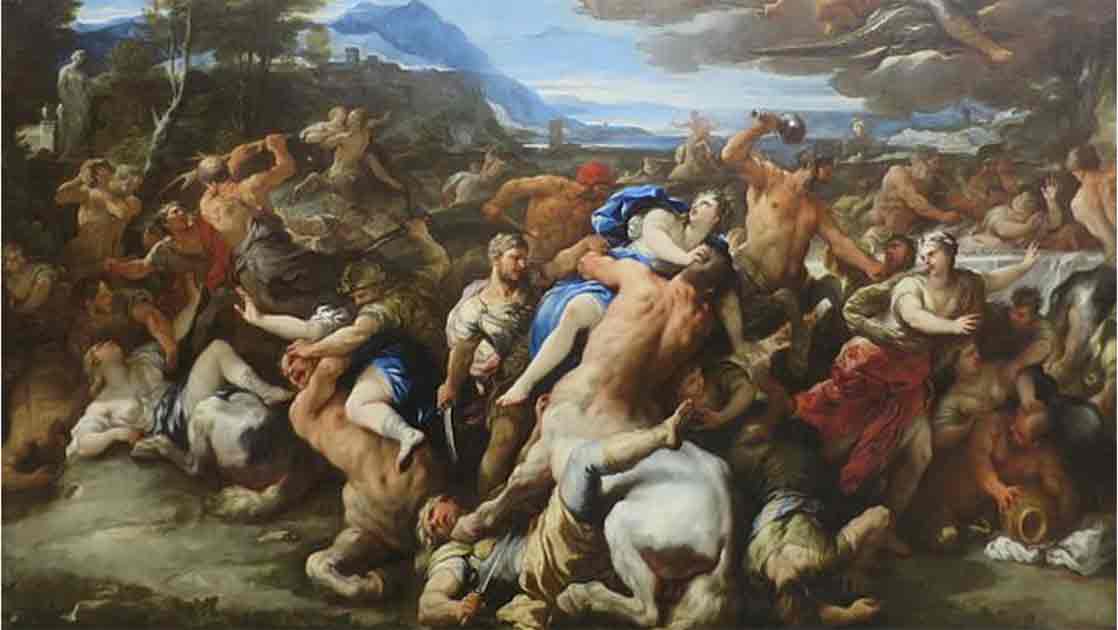Centauromachy - the Fabled Clash Between Lapiths and Centaurs
Centauromachy is a unique and captivating tale woven into the complex tapestry of Ancient Greek mythology. It stands as a timeless narrative packed with themes of conflict, ancient civilizations, and the struggle between order and chaos. The clash between the noble Lapiths and the unruly Centaurs, with its rich symbolism and allegorical significance, has captivated the imagination of artists, poets, and scholars for centuries. Exploring the intricacies of centauromachy, one enters into a world where myth and morality are combined, offering profound insights into the human condition. And it also poses the question - who were the main players in centauromachy, the Lapiths and the Centaurs?
- Chiron, the Noble Elder Centaur of Greek Mythology
- Ancient Mythology Informs Modern Series: The Fantastical Folktales of Harry Potter
Centauromachy and the Origin of the Fabled Horse-men
To understand Centauromachy, we must first delve into the origins of the mythical Centaurs themselves. In Greek mythology, Centaurs were said to be the offspring of Ixion, a mortal king, and Nephele, a cloud nymph created by Zeus to deceive Ixion. This union resulted in the birth of the first Centaur, a hybrid creature with the torso of a man and the body of a horse. Thus, the Centaurs inherited both the noble lineage of their father and the untamed nature of their equine form.

The Torture of Ixion by Giovan Battista Langetti (1635–1676) Museo de Arte de Ponce (Public Domain)
Centauromachy finds its most famous iteration in the events surrounding the wedding feast of Pirithous, the king of the Lapiths, and his bride, Hippodamia. Lapiths were considered to be cousins to the Centaurs, as they both descended from the same ancestor. However, the Lapiths had an ordinary human form, unlike the horse-like Centaurs. The myths describe how the festivities commenced in the grand halls of the Lapith palace, and how the Centaurs, known for their penchant for revelry and debauchery, descended upon the celebration uninvited. Intoxicated by wine and emboldened by their primal instincts, the Centaurs disrupted the joyous occasion, seeking to assert their dominance over mortals.
- The Last of the Siberian Unicorns: What Happened to the Beasts of Legend?
- Eight Legendary Creatures from Greek Mythology That You Might Not Know About

Wall painting of Pirithous and Hippodamia receiving the Centaurs at his wedding. (ArchaiOptix/CC BY-SA 4.0)
In their drunken frenzy, the Centaurs, devoid of restraint or respect for societal norms, began to harass the female guests, including the bride herself. Their actions plunged the wedding into chaos, as the Lapiths, outraged by the Centaurs' audacity, rose to defend their honor and protect their womenfolk from violation. What ensued was a violent clash of civilizations, a struggle between the refined order of the civilized Lapiths and the savage chaos embodied by the wild Centaurs.
A Timeless Mythical Clash
Despite the ferocity of the Centaurs, the Lapiths, armed with courage and unity, emerged victorious in the battle that ensued. Through their collective valor and adherence to the principles of civilization, they succeeded in repelling the Centaurs and restoring order to the wedding feast. Centauromachy thus serves as a testament to the resilience of humanity in the face of adversity, illustrating how the forces of civilization can overcome the savagery that lurks at the fringes of society.

Ancient Roman centauromachy relief on a Roman sarcophagus, 150 AD, at the Museo Archeologico Ostiense (image cropped). (Sailko/CC BY 3.0)
Beyond its narrative allure, centauromachy is rich in symbolism and allegorical significance. The conflict between the Lapiths and the Centaurs serves as a metaphor for the timeless struggle between order and chaos, civilization and barbarism. The Centaurs, with their untamed nature and bestial instincts, embody the primal forces that threaten to destabilize society, while the Lapiths represent the virtues of reason, discipline, and societal harmony.
By breaking down this ancient myth, we can see how it could have served as a metaphor for the civilized Ancient Greeks and their conflicts with their more barbarous neighbors. Scholars propose that the myth of the Centaurs had its origins in the first encounter between the non-riding Minoans, and the nomadic horsemen of the steppes. Could it thus be that the myth of the Lapiths and their battle with the wild Centaurs embodies the first ever clashes between horse-riding cultures and the Ancient Greeks who had no familiarity with horse riding?
Secrets Hidden in Myths
Centauromachy stands as a true testament to the enduring power of myth and its ability to illuminate the complexities of the early human experience. Through its vivid portrayal of conflict and triumph, it offers profound insights into the early struggles between different civilizations, reminding us of the importance of taking a close look into all seemingly simple legends and stories. After all, we never know what secrets hide in tales that seem out of proportion, full of strange creatures and seemingly impossible events. Sometimes, they could just be the proof that when you are not familiar with something - it can appear completely alien and mythical.
Top image: Centauromachy - Battle of Lapiths and Centaurs by Luca Giordano, The Hermitage. Source: Public Domain
References
Childs, W. A. P. and Padgett, J. M. 2003. The Centaur's Smile: The Human Animal in Early Greek Art. Princeton University Art Museum.
Grant, M. and Hazel, J. 1979. Who's Who in Greek Mythology. David McKay & Co, Inc.
Rose, C. 2001. Giants, Monsters, and Dragons: An Encyclopedia of Folklore, Legend, and Myth. W. W. Norton & Company, Inc.

















